Teviathans
CLOSED SPECIES
By Brarrie Art & SAPArtPage
Species Description
Taxonomy:
Scientific Name: Tevinius Familiaris
Common Names: Teviathans or Tevis
Creature Class: Mammalia
Creature Order: Omnivora
Creature Family: Canidae
General Description:
The Teviathans, also known as Tevinius Familiaris, are a large canine like creature that are native to exotic/tropical areas around the globe. These animals are very complex creatures who typically vary in color and size. They can stand to about 10-15 feet tall and can get up to nearly 1,200 lbs! They have three different categories/subspecies, the sky, land, and water types. Also described as an aggressive and territorial species who like to keep to themselves.
Life History:
Teviathans are at the top of their food chain and typically live long and healthy lives. After their birth they grow rapidly and rely on their strong instincts to learn quickly and fiercely. Their survival rate is over 95%! They reproduce once a year, a mother typically bearing one pup, but in rare occasions 2-3.
Food & Habitats:
Most Teviathans are more often predators towards small game and fish, although some are able to completely survive off of plants and berries alone. Some of them may even have a mixed diet of both! Their prey and other food sources are found in warm tropical/exotic locations along with themselves.
Status:
Global Status: The land types are only found in one part of the globe, an island in the middle of the Pacific Ocean. However, the air and water types were able to spread and invade other land masses nearby. Their population is yet to be accounted for.
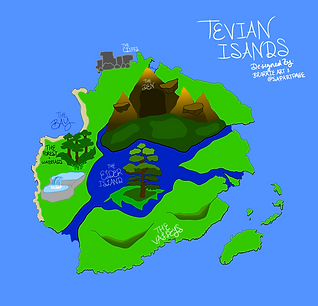
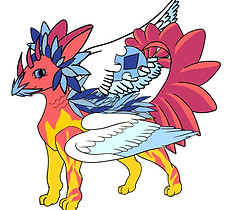
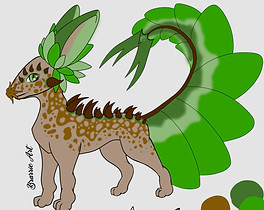
SAPArtPage Teviathan Full Grown Art By SAPArtPage
Brarrie's Teviathan Full Grown Art by Brarrie Art
Tevian Islands Created By BrarrieArt & SAPArtPage
Coloration & Pigmentation
The BASIC species design all around has a white base and is known to have 4 different colors. While the more COMPLEX and rare designs can have a white or black base and 5 or more colors! The difference between the coloration is in the sub species as well. A land Teviathan has a color scheme of neutrals, greens, and browns. A water Teviathan contains a more vibrant scheme containing pinks, purples, red, yellows, and oranges. Finally, the sky Teviathan claim the mixed greens/blues and grays. The coloration of each sub species is to go with what habitat they thrive in. However there are in fact, there are specific color designs and patterns found in the RARE Teviathans. Land Teviathans have more floral like designs, sky Teviathans have sunset designs, and water Teviathans have dark schemes coming as all rare traits.
DESIGN EXAMPLES:
Appearance

Commissioned Art By:
Amanda Pratiwi M on FB
Common Designs: (ALL OF THESE DESIGNS ARE AVAILABLE ON THE AVAILABLE ADOPTS PAGE!)

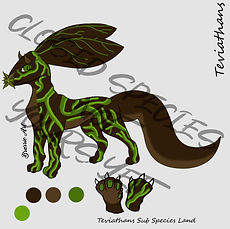
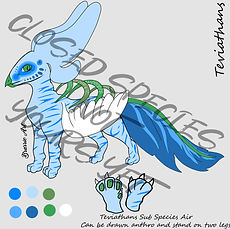

Rare Designs: (ALL OF THESE DESIGNS ARE AVAILABLE ON THE AVAILABLE ADOPTS PAGE!)
Anatomy
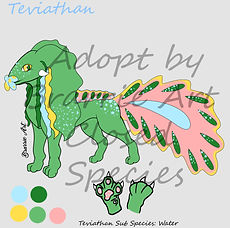

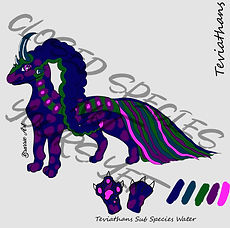

Teviathans can have set traits and varying traits depending on the sub species. There are common changing traits and rare changing traits as well. The only set traits throughout all Teviathans is the legs, torso, neck, and head shapes. Along with the fact that they are all feral!
Common Changing Traits:
The tails, nose, and ears are traits that change within all subspecies.
Unique Features to Each Sub Species:
The land Teviathans have horns and star noses, the sky Teviathans have beaks and wings, and the
water Teviathans have star noses (like the lands), gills, and webbing.
Special/Restricted Traits:
The tail tips, back additions, and facial gems/additions are special/restricted traits that can only be found
on rare Teviathans.
Anatomical/Biological Functions:
Common Traits Functions:
The stockier build is due to the large mass of muscle found on these creatures and the very
low amount of fat.
Their claws serve as weapons and also can be used for digging, scratching, and tearing apart their food.
The flat tails are able to cover the body in a curled up position to blend into the environment
surrounding them or sometimes to fit into smaller spaces. They also add an armor like feature for
protection against predators, even though they don't have many.
Last of all, the long wide ears main functions are to provide extra protection and give them intensified
hearing that can hone in on sounds around them for miles.
Unique Sub Specie Traits Functions:
The horns found on the land subspecies serve to attack predators, protect the head, but are mainly used for rooting. The water subspecies uses their gills for breathing under water for longer periods of time and webbing to aid them in swimming smoothly. Last, the sky subspecies uses their wings for flight and to help them stand on their back legs for short periods of time.
The star noses on land and water Teviathans serve two purposes. One meant for the land Teviathan to root through the dirt for roots and bugs,
and the other purpose allowing land and water Teviathan to have an increases sense of smell to stay away from predators or find prey.
The beak noses on sky Teviathans serve to help catch small game and deliver fatal blows, they can also be used to retriever
fish from the water.
Special/Restricted Trait Functions:
The rare features found on some Teviathans (tail tips, back additions, and face pieces) also have their
own smaller functions. Tail tips can be used as a weapon, back additions serve as extra protection, and
the face pieces are to help blend into their environments a little bit more than others.
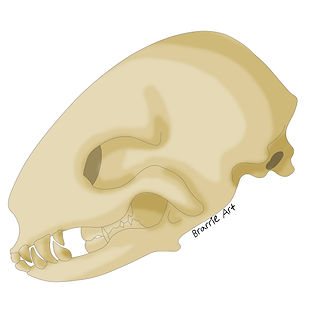
Diet
The LAND Teviathan's diet consists of;
Roots, Bugs, Plants, Berries, & Small Game!
While a WATER Teviathan's diet contains;
Algea, Seaweed, & Fish!
Finally, SKY Teviathans diet is made up of;
Tree Fruits, Leaves, Bugs, & Birds!
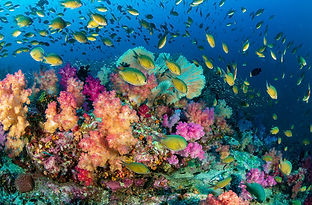
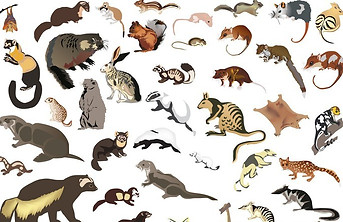
Mating & Reproduction
The mating process is not a very complex one. Teviathans are very picky on who they connect with and most try to stay within their own subspecies because that is what they are most comfortable with. For example, a land and sky Teviathan would have less of a chance of falling in love than a land and land or sky and sky. Males typically search for a life long partner in a female, but sometimes only go as far as reproduction. The produce a low hum that attracts females to them as well, the lower the hum the more eligible mates. As a Teviathan grows older their hum gets lower, a higher pitch means it is most likely a young Teviathan.
The reproduction cycle is also not very complex, it is very similar to humans but within a shorter time. Once they have mated the females carry the child for 5 months. They are then delivered through a live birth, labor can last up to 72 hours. Their young are called pups. Each pregnancy can produce up to 3 pups although having 1 is most common. They are also able to get pregnant every 3-5 months.
Nesting Areas vary depending on the sub species, although they tend to be tucked away in a crevice so they are not easily found. A land Teviathan is most likely to dig a burrow, find a cave, or are able to live under large tree roots. While water Teviathan hide away in water caves and coral reefs. Sky Teviathan, the final sub species, can nests in trees, live in caves along the side of a cliff, or more commonly just on ledges.